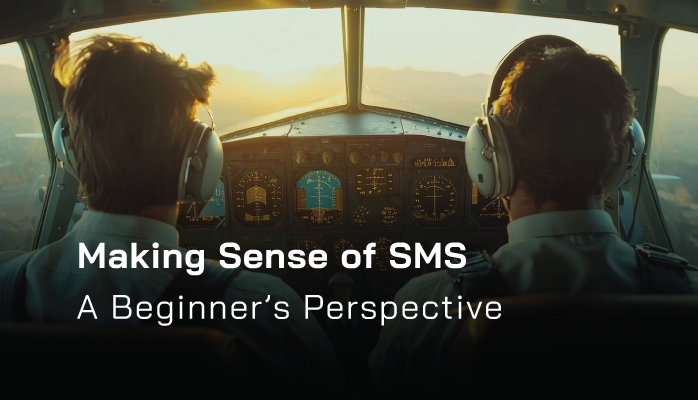What Is This SMS Thing?

What’s the first thing you do when you want to answer a question? You Google it, right? Well, when you Google "aviation SMS", this is what the FAA will tell you:
SMS is the formal, top-down, organization-wide approach to managing safety risk and assuring the effectiveness of safety risk controls. It includes systematic procedures, practices, and policies for the management of safety risk.
But What Does That Mean?
Being the curious spirit that I am, I started digging.
At its core, an SMS or Safety Management System is a framework to support proactive risk management. A definition that at first glance doesn’t tell us much. As I’ve learned about SMS, I’ve come to think of it as a toolbox.
Your toolbox may start as an empty box, but it’s got room to grow, it’s scalable. You add some basic tools, and as time goes by you add more advanced ones to tackle more advanced projects. After a while, each time you open it, you find the exact tool you need.
SMS is our toolbox for safety, and there’s no job more important.
Our toolbox has four large drawers (also known as pillars) that we’ll fill with tools to help make our operations safer for everyone. Once we’ve collected all our tools, we’ll be prepared to put them to use.
- Safety Policy
- Safety Risk Management
- Safety Assurance
- Safety Promotion
Let’s break down what we need to stock each of those drawers.
Safety Policy as First SMS Pillar

While it may seem like the easiest part of your SMS, the safety policy is more than just a signed document from senior management. There are several things our safety policy drawer needs:
- Management Commitment
- Safety Accountabilities
- Key Safety Personnel
- Emergency Response Planning
- SMS Documentation
Related Articles on Aviation SMS Safety Policy
- The Five Elements of ICAO's Safety Policy and Objectives in SMS
- Writing Awesome Aviation Safety Policy Statements
- Writing an Aviation Safety Policy for SMS - 4 Free Templates
Safety Risk Management as Second SMS Pillar
There are many specialized tools available for safety risk management or SRM, but the purpose is to find the hazards and risks inherent in the system and control them. While you’ll acquire more and more specialized tools for the job, these are your basics:
- Hazard Identification
- Risk Assessment and Mitigation
Related Articles on Aviation SMS Safety Risk Management
- Difference Between Reactive, Predictive and Proactive Risk Management in Aviation SMS
- How to Practice Reactive, Proactive, and Predictive Risk Management in Your Safety Program
- What Is Reactive Risk Management (Why It’s Essential for Aviation SMS)
Safety Assurance as Third SMS Pillar

The policy has been laid out, and the controls put in place, but we can’t rest on our laurels just yet. Part of an SMS is making sure those policies and controls are implemented and functioning as planned. Here’s what you’ll need:
- Safety Performance Monitoring and Measurement
- Management of Change
- Continuous Improvement
Related Articles on Aviation SMS Safety Assurance
- 4 Pillars | What Safety Assurance Really Means in Aviation SMS
- 40 Questions for Your Safety Assurance Process in Aviation SMS [With Free Checklists]
- Best Tip for Aviation Safety Assurance Monitoring
Safety Promotion as Fourth SMS Pillar
Finally, everyone needs to be on board, or our system will be a pretty dream rather than a functional tool. To build a culture of safety, we only need two things, but they’re important ones:
- Training and Education
- Safety Communication
Related Articles on Aviation SMS Safety Promotion
- 4 Pillars | What Is Safety Promotion Component (the "Overlooked" Pillar)
- Effective Safety Promotion, the Informal Way for Aviation SMS
- Aviation SMS Surveys - an Often Neglected Safety Promotion Tool
Seems Like a Lot of Work
Sure, but it is worthwhile to work. It’s easy to put safety on a back-burner, and most of us do. Sadly, that back burner eventually erupts into flames, and it’s a lot more trouble to put it out than it would have been to simply pay attention in the first place.
A good SMS can help us to get ahead of the curve and prevent injuries and accidents from ever happening. When accidents don’t happen, we save time and money. Not to mention stress, which we could all use less of.
Each of these parts could be an article on its own, and many of them are. I’ll be digging into SMS more in the upcoming weeks, and I hope you’ll join me. I’m just getting started with this SMS journey, and it’s bound to be a wild ride.
Last updated in April 2025.






